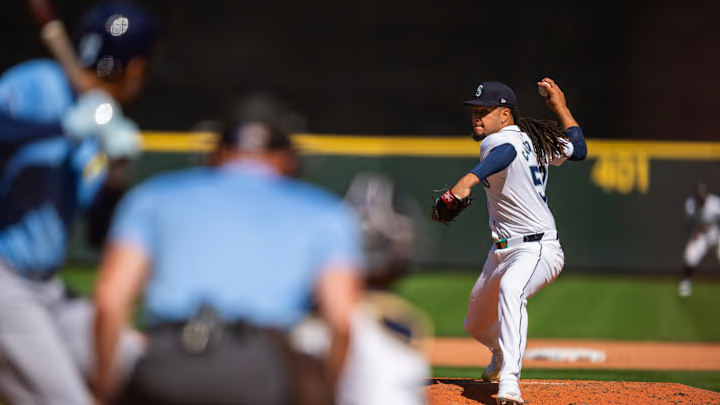When people think of the term "bounce back" in relation to sports, it's often associated with rough numbers. For pitchers, that might look something like an ERA over 5.00 and/or an rWAR below 0, for which Walker Buehler or Bobby Miller might come to mind as prime examples.
That's what made it all the more surprising that Luis Castillo found himself on MLB.com's list of pitchers looking to rebound next season, as argued by Jason Catania.
There are very few realities in which a 3.64 ERA with a 1.17 WHIP over 175.1 innings can be seen as a season in need of a bounce back effort. However, it's clear that 2024 was, at the very least, a step in the wrong direction for Castillo. His ERA+ of 101 and rWAR of 1.8 were similar numbers to his career-worst 2018 season with the Reds.
So while the rest of the Mariners starters were hitting new peaks last year, why did Castillo regress?
To me, the biggest culprit likely lies in his lopsided arsenal. Castillo throws four pitches: a four-seam fastball, slider, sinker, and changeup. His four-seam fastball posted a run value of plus-18, one of the highest of any pitch in MLB last year. It is consistently one of the most effective primary weapons among all starters. His slider is also good, boasting a whiff rate of 35.8% in 2024.
Luis Castillo's 7th and 8th Ks.
— Rob Friedman (@PitchingNinja) May 12, 2024
And his trademark 💪 K Strut. pic.twitter.com/inm7KTtzfc
The trouble comes with the other two pitches. While he gained notoriety in Cincinnati for throwing an outstanding changeup, he has gradually begun phasing the pitch out of his arsenal, going from a usage rate of 31.6% in 2019 to just 14.3% in 2024. Over the years, his spin rate has gradually decreased, reducing its effectiveness and allowing opposing hitters to hit it with more authority, slugging .545 against it last season.
His sinker follows a similar story. It resulted in a lot of hard contact (.453 slugging against) and, unlike the changeup, wasn't generating many whiffs either. In general, sinkers aren't known to generate high whiff rates, instead intending to induce soft contact or hit the corners of the zone for called strikes. George Kirby has one of the most precise and effective sinkers in the game but has a whiff rate of just 10.3%. The problem with Castillo's sinker is that it often ends up too close to the heart of the zone, an easy place for opposing hitters to do damage.
That said, fans should be optimistic about what's next for Castillo. Bryce Miller is a great example of a pitcher who, through a few tweaks to his arsenal (adding a splitter upping usage of his sinker) was able to see dramatic improvements in his overall numbers from his rookie year to his sophomore season. With many of his other teammates toying around with new weapons, we'll have to wait and see what tweaks and improvements Castillo has made to his arsenal.
There are two positive outcomes if Castillo does return to his peak form. First, he'll obviously be an even more effective starting pitcher. Second, this could increase his trade value heading into next year's deadline.
At the start of spring training, Castillo spoke on how he felt about the trade rumors that swirled all winter and expressed faith in the front office, especially given his no-trade clause. This hasn't stopped more rumors coming out regarding other teams that were interested, but it seems like he'll remain in Seattle for now. As such, the more pressing question involving him is whether he'll get the chance to repeat his position as the team's Opening Day starter.
